What is in Bubble Tea?
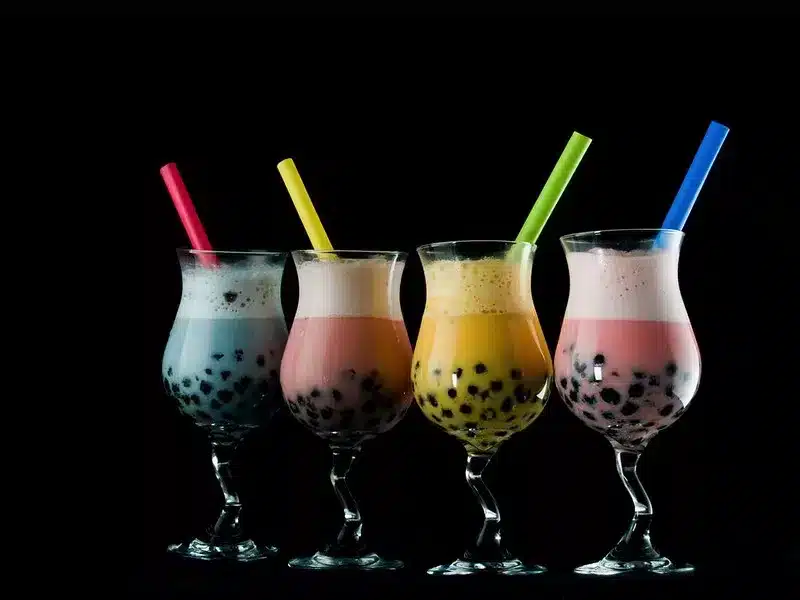
Introduction to Bubble Tea
If you have ever wondered what goes into making this sweet, flavourful drink, you have come to the right place. In this blog post, we will take you on a journey to uncover bubble tea’s origins, primary components, flavourings, cultural significance and more. As a supplier and distributor of bubble tea and Taiwanese groceries, we are excited to share our knowledge and passion for this beloved beverage.
Over the years, bubble tea has transcended its Taiwanese roots and become a global sensation. It is believed that bubble tea was invented by an accidental creation by Ms Lin Hsiu Hui who added her boss’ favourite Taiwanese dessert fen yuan into his milk tea at a board meeting.
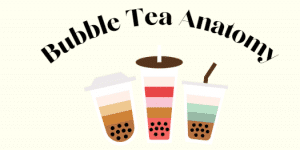
What are the bubbles in bubble tea?
The ‘bubbles’ refer to tapioca balls, tapioca pearls, boba, boba pearls and boba balls- they all mean the same thing. This may refer to popping boba as well, though they are a more recent addition to the realm of boba. Tapioca balls have a signature chewiness that goes wonderfully with the tea, which makes them the classic topping that goes with the original milk tea or flavoured milk teas. There are other toppings such as popping boba, jellies, aloe vera and more.
Can you eat the bubbles in bubble tea?
Absolutely! They are meant to be chewed and eaten whilst you drink your bubble tea. Some even call them a fun surprise! This is because of their unique soft and chewy nature that you may not have expected when you first tried it. These bubbles are an integral part of bubble tea and they are almost always complimentary. Their neutral taste allows them to seamlessly absorb the flavours of the tea and flavours, creating a pleasurable blend.
The 3 Primary Types of Bubble Tea
1. Original Milk Tea
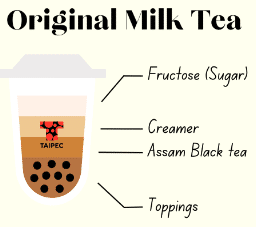
- The base of any bubble tea is the main liquid used. For original milk tea, we often use, but are not limited to Assam Black Tea.
- We can then customise the sweetness level with the amount of fructose added allowing flexibility for customers.
- Then, there is the creamer powder with a Vegan creamer option as an alternative.
- Then of course: Tapioca balls. Original milk tea is not limited to this topping, however, it is the most popular pairing.
2. Flavoured Milk Tea
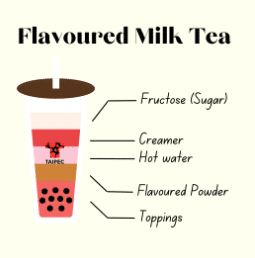
- The base for this bubble tea is hot water due to the tea flavouring being held in the flavoured powder.
- Once again the amount of sugar can be customised to the customers’ preference.
- The flavoured powder is mixed with hot water, creamer and fructose. Some popular flavours are Taro, Matcha, Mango and Strawberry.
3. Fruit Tea
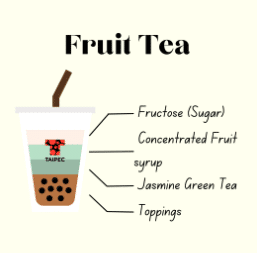
- The base is often Jasmine Green Tea, as it has a lighter taste and the flavour of the fruit syrups can shine through.
- Like the others, fructose is added for sweetness and can be customised.
- Four pumps of concentrated fruit syrups are put into each fruit tea and popular flavours are Passionfruit, Lychee, Mango, Peach and Strawberry.
- Popular toppings for fruit teas are the jellies, popping boba and aloe vera, but it can still be enjoyed with the tapioca balls.
Flavourings and Additives
The creativity of bubble tea extends to its flavourings and additions, allowing for endless possibilities:
- Fruit Jams: These can boost fruit flavours and add more texture to the fruit teas. For example, Passionfruit Jam, Strawberry Jam and Mango Jam.
- Combination of flavours: A few flavours can be added together to create a new drink. For example, the tropical fruit tea is made of a combination of Pineapple, Mango and Passionfruit syrup. A few more ideas for fruit tea combinations can be found here.
- Creamy additions: Cream foams or whipped cream can be poured on top to add a creamy texture and slightly salty flavour to balance the sweetness of the drink. This can be a great addition to festive drinks.
- Fruit pieces: Fresh fruits such as passionfruit, strawberry and lemon can be added for a burst of natural flavour.
Health Considerations
While bubble tea is a beloved treat, it's important to be mindful of its nutritional aspects:
– Nutritional Aspects: Bubble tea can be high in sugar and calories, depending on the ingredients used. It is wise to choose lighter options if you are watching your calorie intake.
– Managing Sweetness and Calorie Content: Opt for lower-sugar options and healthier toppings.
– Tips for Moderation and Balanced Consumption: Enjoy bubble tea in moderation as an occasional treat, and be conscious of your overall sugar and calorie intake.
If you would like a deep dive into the calories in bubble tea, our blog on how many calories are in bubble tea, will help you get a deeper understanding of the calorie content in different drinks and how to manage your calorie intake.
Exploring Bubble Tea Culture
- Bubble tea trends and innovations: Keep an eye on new flavour trends and creative combinations that bubble tea shops introduce whether it is a festive or seasonal drink or one inspired by a new movie.
- Bubble tea shops and popular chains: Discover local bubble tea shops, franchises, and popular chains that have become destinations for bubble tea enthusiasts. Other types of businesses such as restaurants, cafes and universities have also incorporated bubble tea into their menus.
- Bubble tea societies: Many universities in the UK have bubble tea societies where people get together to enjoy their favourite drinks together whether in the form of a bubble tea crawl, picnic or a bubble tea-making event.
Whether you're a seasoned expert or a novice to bubble tea, Taipec is happy to help on this incredibly delicious journey. Simply contact us, and one of our friendly staff will assist you.
